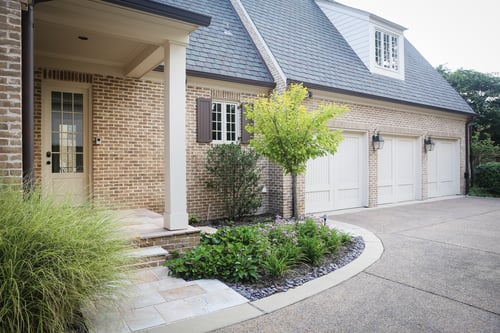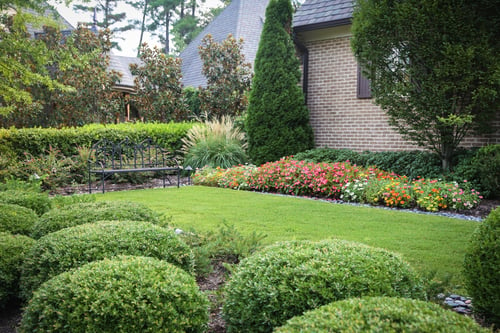The warm temperatures and damp conditions of spring have arrived early and, while rainfall is necessary for your property, there is such thing as too much rainwater.
Just as your lawn and plants can die without the proper amount of water these same parts of your property can die with too much of it.
Common signs of having too much water on your property, otherwise known as drainage problems, include:
- Areas of standing water
- Migrating mulch
- Mosquito issues
- Soggy grass that doesn’t grow well
While too much rainwater can easily be detected, the negative effects of poor drainage can take a little time. So what happens to certain areas of your property if nothing is done to alleviate poor drainage? Take a look below at the 4 areas of your property negatively affected by heavy rain.
Hardscape Surfaces
When your hardscape surfaces aren’t graded properly they are at risk for standing water and, in turn, erosion. These surfaces, such as your driveway and/or other walkways, require a proper slope for efficient drainage. You can also install a retaining wall to assist with drainage problems as well.

Lawns and Green Spaces
Proper grading isn’t only applied to hardscape surfaces, but to lawns and greens spaces as well. Low areas of your lawn will hold excess water, either killing your turf or leaving you with soggy grass that doesn’t grow well. Consider giving this extra water a place to go by installing a creek bed.
To learn more about yard drainage read our blog, 3 Ways to Solve Your Yard Drainage Issues.
Plants and Gardens
Design your flower beds and vegetable gardens with drainage in mind. Consider the natural water flow before implementing your design and noticing poor drainage too late. Additional water in beds and gardens can kill your plants or cause other damage to other parts of your property. Avoid this issue by calculating the proper slope while designing your garden.

Soil
While it is easy to detect the signs of poor drainage on hardscape surfaces, lawns and plant beds, it is more difficult to detect compacted, and therefore unhealthy, soil. Healthy soil stores water and nutrients, limits erosion and consists of air spaces. Compacted soil doesn’t house the proper air which, in turn, can create unhealthy flowers and plants. This type of soil is a result of several things including poor drainage. Find out if your soil is considered healthy by picking up a soil test at your local garden store.
To learn more about soil health and a soil test read our blog, Spring Plants – 5 Reflections from Last Year.
Rainfall is necessary but it is just as necessary to know how to distribute it in order to prevent drainage issues. Take advantage of this spring rainfall and both identify the water flow of your property as well as any poor drainage issues that you may have.

